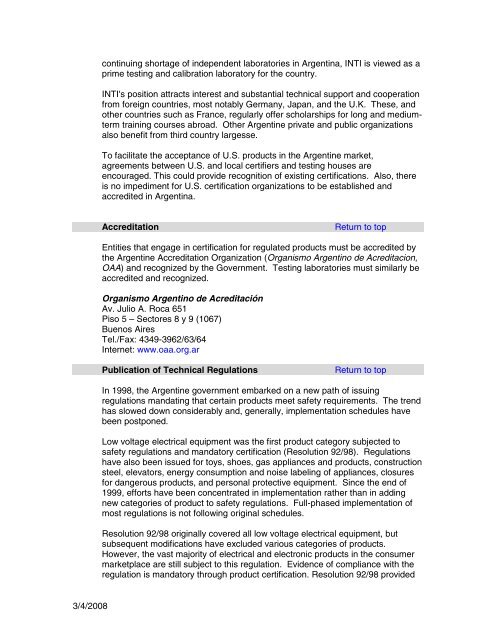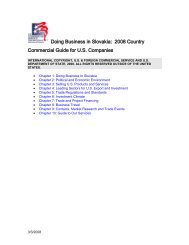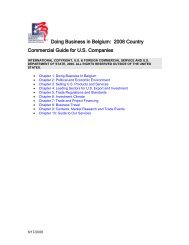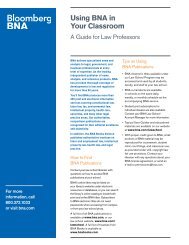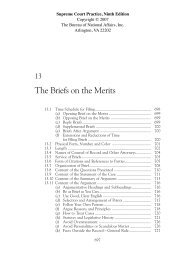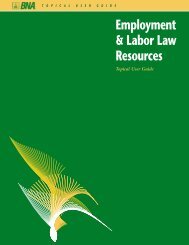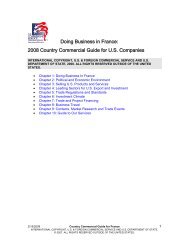You also want an ePaper? Increase the reach of your titles
YUMPU automatically turns print PDFs into web optimized ePapers that Google loves.
3/4/2008<br />
continuing shortage of independent laboratories in <strong>Argentina</strong>, INTI is viewed as a<br />
prime testing and calibration laboratory for the country.<br />
INTI's position attracts interest and substantial technical support and cooperation<br />
from foreign countries, most notably Germany, Japan, and the U.K. These, and<br />
other countries such as France, regularly offer scholarships for long and mediumterm<br />
training courses abroad. Other Argentine private and public organizations<br />
also benefit from third country largesse.<br />
To facilitate the acceptance of U.S. products in the Argentine market,<br />
agreements between U.S. and local certifiers and testing houses are<br />
encouraged. This could provide recognition of existing certifications. Also, there<br />
is no impediment for U.S. certification organizations to be established and<br />
accredited in <strong>Argentina</strong>.<br />
Accreditation Return to top<br />
Entities that engage in certification for regulated products must be accredited by<br />
the Argentine Accreditation Organization (Organismo Argentino de Acreditacion,<br />
OAA) and recognized by the Government. Testing laboratories must similarly be<br />
accredited and recognized.<br />
Organismo Argentino de Acreditación<br />
Av. Julio A. Roca 651<br />
Piso 5 – Sectores 8 y 9 (1067)<br />
Buenos Aires<br />
Tel./Fax: 4349-3962/63/64<br />
<strong>In</strong>ternet: www.oaa.org.ar<br />
Publication of Technical Regulations Return to top<br />
<strong>In</strong> 1998, the Argentine government embarked on a new path of issuing<br />
regulations mandating that certain products meet safety requirements. The trend<br />
has slowed down considerably and, generally, implementation schedules have<br />
been postponed.<br />
Low voltage electrical equipment was the first product category subjected to<br />
safety regulations and mandatory certification (Resolution 92/98). Regulations<br />
have also been issued for toys, shoes, gas appliances and products, construction<br />
steel, elevators, energy consumption and noise labeling of appliances, closures<br />
for dangerous products, and personal protective equipment. Since the end of<br />
1999, efforts have been concentrated in implementation rather than in adding<br />
new categories of product to safety regulations. Full-phased implementation of<br />
most regulations is not following original schedules.<br />
Resolution 92/98 originally covered all low voltage electrical equipment, but<br />
subsequent modifications have excluded various categories of products.<br />
However, the vast majority of electrical and electronic products in the consumer<br />
marketplace are still subject to this regulation. Evidence of compliance with the<br />
regulation is mandatory through product certification. Resolution 92/98 provided


